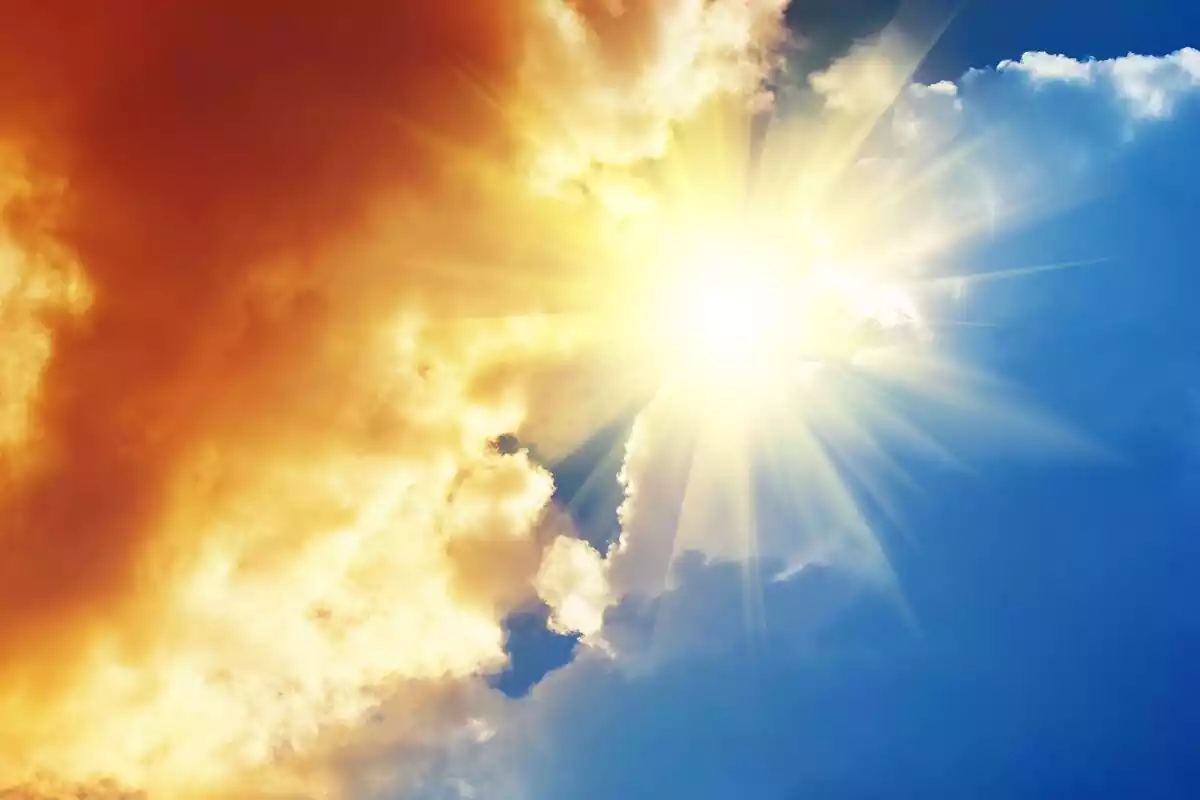
Shekhina in the Hebrew Bilble
The Shekhina is one of many female incarnations of Divinity referred to in Hebrew literature, even in the Bible, though there the references are subtle and hidden. But the Shekhina is the only image of the female divine that is blatant in Jewish literature (though the specific term doesn't appear in English versions of the Hebrew Scriptures), both as female, and as a specific term for God.
The term Shekhina comes from the Hebrew root “to dwell”. It was originally used merely as one of many names of God. However, with the development of the Qabala (a form of Jewish mysticism) in medieval times, the Shekhina became known as a separate entity, with her own attributes and actions. The word for deity, mentioned over 7000 times in the Hebrew Bible, is today designated as Yahweh.
Yahweh is composed of 4 letters: Yod, which stands for Father, Heh, which stands for Mother, Vav, which stands for Son, and Heh, which stands for Daughter. The Shekhina is associated with the Heh letter. From this, “it is clear that the female is given equal importance in the written representation of Deity in Holy Scripture”.

Usually the term Shekhina is used, not to denote an entirely separate goddess, but as a name for God, or more specifically, the physical manifestation of God: “When God decides that a place, or an event that is happening, or the people present are worthy of his participation, he joins them unseen. Those present can feel the holiness enveloping them, and they know that God is now present (Shokhen) there. The word Shekhina is reserved for God's presence only”.
The term is used in Tannaitic sources (i.e. Mishnah, Midrash, etc) to also designate sacred space (i.e., Land of Israel, Temple, etc) as well as divine activity and manifestations.
The radiance of Moses and the exile from the Temple
Frequently a confusion enters because the Shekhina, unlike the transcendent God in whom we are taught to believe, has an actual physical presence: “When Moses asked to see the glory of God, he was shown the Shekhina, and when the prophets in their visions saw God in human likeness, what they actually saw was not God Himself but the Shekhina”.
This physical presence usually involves light: “The view of mediaevals was that the Shekhina is a particular material entity, made of light; radiance is another way to describe it: Shekhina is the radiant presence of the Divine”.
In fact, when Moses came down from Mt. Sinai with the Ten Commandments on the tablets, he exuded a physical radiance that was the Shekhina, and it frightened the people who saw him: “And it came to pass, when Moses came down from Mount Sinai with the two tablets of Testimony in Moses' hand, when he came down from the mount, that Moses knew not that the skin of his face shone while he talked with him. And when Aaron and all the people of Israel saw Moses, behold, the skin of his face shone; and they were afraid to come closer to him”. (Exodus 34:29-30). This was the Shekhina that stayed upon Moses for the rest of his 120 years of life.
In the earliest writings, the Shekhina was believed to physically be present with the people as they wandered in the desert for 40 years, and then was believed to reside in the Temple. When the Temple was destroyed, the Shekhina had to actually flee from it: “It is said that Shekhina fled when her Jerusalem temple was destroyed. Thus, divinity was split apart”.
The Shekhina's exile from the Temple echoes the people's exile from God: “There is an identity between the people of Israel and the Shekhina. The Shekhina even goes into exile with the people”.

The paradox of God's and Shekhina's omnipresnce
The people of Israel also identify with the Shekhina because she acts as an intermediary between the people and God: “Shekhina is the talmudic term for the created splendor of light which acts as an intermediary between God and man, and which sometimes takes on human form”. According to Saadiah Gaon[882-942 CE], the Shekhina “is identical with 'kvod he-Shem' (the glory of God), which served as an intermediary between God and man during the prophetic experience”.
There is a paradox within Judaism between the idea of One God and God/Shekhina: “The omnipresence of God/Shekhina contains the paradox of God's pervading the entire universe as well as being associated with particular places or settings. The concept of Shekhina does not explain the paradox, only expresses it. This is something of which God is capable, but which human reason cannot fathom”.
Some scholars say it is not a paradox, but the development of the idea: The idea of a “mobile God” who accompanies the people of Israel when they travel, and rests with them when they come to a halt, may be an indication that our forefathers believed in a powerful God, but not necessarily a universal God, who is everywhere at all times.
Sages overcame this difficulty by creating a new concept: God is indeed everywhere at all times, but there may be a concentration of God's presence, Shekhina, in one place. In fact, “Rabinnic Shekhina is a religious philosophy that can bridge the distance between God and the world”.
Now that the Temple no longer exists, the Shekhina no longer has a specific place in which she resides. She is, in fact, missing in action: “Kabbalistic writings teach that the absence of her feminine spirit within the Divinity is the source of great distress and imbalance in the world. For many centuries, Hebrew peoples have prayed for her return”.

But there are ways to experience the Shekhina: “The Divine Presence does not rest upon Israel unless there are at least two myriads and two thousands, myriads of thousands” are at least 22,000 present.The aim of this Midrash in stressing the critical mass needed for the Shekhina is to emphasize the individual responsibility for fulfilling the mitzva of procreation.
“If your Jewish community numbers only 21,999 people and you could have brought one more child to the world but did not, the blame for the absence of the Divine Presence from your community is entirely upon you!” Women are also seen to symbolize the Shekhina in a way that men do not: “How much so can be understood from the fact that the Rebbe[Nachman]once mentioned that in the days of Avraham Avinu the Shekhina (Divine Presence) was called 'Sarah'. One's wife personifies the Divine Presence in the home!”
As long as the Shekhina is separated from God, the people of Israel cannot be reconciled with the Divine either: “The first step to having a 'whole' people is a 'whole' Divine”. In the meantime, there are two ways of experiencing the Shekhina-first is “the individual experience of the joy of performing a mitzvah: When you cause your fellow Jew a great relief or a great joy, when you decipher a passage of Talmud or grasp the deeper meaning of a Biblical verse, then you experience the Shekhina as an individual”.
Second is the other type of religious experience: When you stand in the midst of hundreds or thousands who are united in the same prayer, the same chant, the same song... you feel that special excitement which is best described by the words: “The voice of the multitude is the voice of God!”. But the end goal is always reconciliation: “The Messianic Era occurs when the common consciousness reaches the threshold of connection with this experience of true joy by connecting with the essence of the Shekhina Within”.
